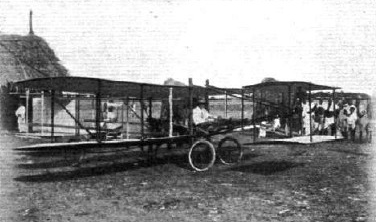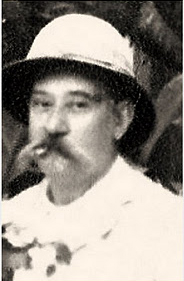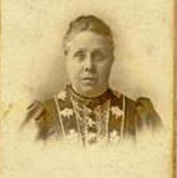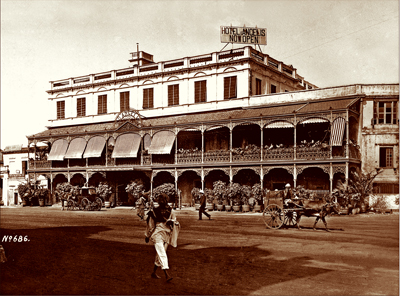|
Italians, according to Dr. Viola, have been leaving their home country since time immemorial. After the political unification of the Italian peninsula under the Piedmontese in 1861, emigration increased. More than thirty millions, it is believed, left Italy after 1870. This went on till around 1940. The main destinations of the Italian emigration were the Americas and Europe. Most of those who emigrated were peasants or from the working class, who had little or no expectations of improving the quality of their lives in Italy. The migration of the D’Angelis, on the other hand, was a voluntary migration for entrepreneurial reasons.
Giacomo D’Angelis was a middle-class, educated man who belonged to that group of Italian traders and entrepreneurs who settled in India in the second half of the 19th Century in order to earn profit from business there. These included the Falettis, the Monginis, the Bosottos, among others, who contributed to the Italians gaining a reputation in India as confectioners, chefs and hotel managers.

 Once, D'Angelis was the best hotel in town. Giacomo D'Angelis himself was known, apart from his confectionery and hospitality businesses, as being the first resident of the city to fly an airplane*. Suddenly, a couple of years ago, out of the blue, a great-grandson of his, Jefferis Donald Evans D'Angelis, got in touch with me from, of all places, Santiago, Chile. We have kept in touch since and he has over time sent me a heap of pictures of both hotel and family a few of which will appear in these pages in this and the next issue. Accompanying them will be a text put together from a paper that Dr. Antonella Viola of the Universidade Nova, Lisbon, Portugal, published – Migration across Three Continents: The D'Angelis Family – and which Jefferis D'Angelis sent me, as well as from information my correspondent contributed, and from other published sources.
– THE EDITOR
* D'Angelis, in many ways a Frenchman at heart, was inspired by Bleriot's July 1909 Cross-Channel flight and was determined to introduce Madras to aviation. In March 1910, he piloted a made-in-Madras aeroplane using the Island Grounds as his airstrip. The only dispute is who built that first plane: Addison's or Simpson's?
Maruthamuthu Moopanar (a Tanjore landlord) 'shot', using a hand-cranked camera running at a speed of 16 frames/second against today's 24 fps, D'Angelis' pioneering flight – and later screened it in Madras and Tanjore.
|
Giacomo Maria D’Angelis was born in Messina (Sicily) in 1844 to a middle-class family. His father, Francesco D’Angelis, owned a bookshop and his mother, Anna Grillo, was a housewife. After high school, he travelled to France in 1864 to train as a confectioner. There is a gap in the story then, but next he is reported as arriving in Madras in 1875 with the new Governor, the Duke of Buckingham and Chandos, on whose staff he is said to have been. Certainly, during all the years he (D’Angelis) spent in Madras, he was very close to Government House.
On October 16, 1880, he married Esther Jane Wilnel, believed to be Irish, in Coonoor; he was 36 and she was 28. She is later always referred to as Wilme. Was ‘Wilnel’ in the marriage records a mistake? Her father too is recorded as a Wilnel, Benjamin Wilnel.
(Editor: Perhaps, a regular contributor to this journal, the Rev. Philip Mulley, will have an answer to that.)
The D’Angelis’ had six children, five of them born in Madras: 1. Giacome Wilme D’Angelis born in Madras (August 1881 – December 1881) and buried in ‘Pursewalkam’; 2. Anne Violet (1884 – death unknown); 3. Francesco D’Angelis (1886 – death unknown); 4. Carlo (or Carlos) Umberto D’Angelis (1887-1920); 5. Marianna Elise D’Angelis (1892-1977), who was baptised in Ooty; and Louis D’Angelis who alone was not born in Madras but in Paris in 1889. He died in Santiago, Chile, in 1964, and was Jefferis D’Angelis’ grandfather.
When the Duke of Buckingham left Madras in 1880, Giacomo D’Angelis stayed on in the city and opened his confectionery business, the Maison Francaise, specialising in French and Italian cakes, pastries and chocolates, that year. Thereafter, he considered Madras his home. But he loved to travel and Turin, Italy, was probably a stop – his last one – during a holiday; he died there c. 1934.

Esther Jane Wilme.
|
Why did Giacomo D’Angelis opt for India, a geographically and culturally distant country, as the place for new business activity? Italian confectioners and chefs had gained a high reputation in British India where they became well known among European settlers and the Indian elite. They belonged to a little-studied migrant minority of traders and entrepreneurs, who sought to take advantage of a new world of commercial and economic opportunities opening up in India after the birth of the Raj. At that time India was perceived, along with other Asian countries like China and Japan, as a new frontier for international business.
Italians in India usually worked in the import-export sector, handling the import of Italian products into India and the export of Indian products to Italy. Some specialised in trading in specific products, such as coral, which was in great demand in India and was the most important product from Italy sold in the Indian market. Others ran small or medium enterprises which were the agencies of mother houses headquartered in Italy. The main goal of these Italians was to seize the opportunities that the Indian market offered, but which were being exploited by Great Britain, Germany and Austria, whose nationals would purchase Italian goods and re-export them to India. In the first half of the 19th Century, British traders re-exported to India from the ports of Leghorn and Genoa large quantities of Italian silk waste, dried fruits, cheese and even olive oil and sulphur as well as of other products. Some of the most traditional Italian products, such as Parmesan cheese and olive oil, were mostly exported to India by non-Italians.
 with two visiting travel agents.jpg)
Giacomo D'Angelis (centre) with
two visiting travel agents.
|
A good portion of the Italian products known and consumed in India was footstuffs and the business of food was for many Italians profitable. Some of them made huge fortunes in India, primarily as caterers and confectioners. Giacomo D’Angelis belonged to this group.
Although in recent years the internationally renowned symbols of Italy and Italian gastronomy and lifestyle have been pasta, especially spaghetti, together with pizza, expresso and cappuccino, in 19th Century British India Italians were mostly associated with confectionery. The initiator of the Italian confectionery tradition in India was Federico Peliti, a manufacturing confectioner who arrived in Calcutta in 1869 as the offical caterer of Lord Mayo, the then British Viceroy, and his entourage. When the latter was assassinated, Peliti settled in Calcutta where he set up his own business by launching a confectionery shop in Bentinck Street, not far from Esplanade Row. As the business thrived, Peliti moved to a better location in Esplanade East, where he opened a tea-room in 1881. In 1907, when Peliti’s sons had already stepped into their father’s business, a restaurant adjacent to the confectionery shop was opened. In the beginning Italian cuisine went hand in hand with French cuisine, which was at that time better known, and more appreciated among Europeans in India. By the end of the 19th Century, thanks to the activities of Italian confectioners and chefs, pasta (macaroni), salami, preserves, sauces and ice-creams were increasingly appreciated in India, particularly by the Europeans and upper-class Europeanised Indians.
By the end of the 19th Century Italian food was introduced in Bombay, primarily thanks to Felice Cornaglia, a professional caterer. Bombay also had several Italian-owned shops which imported foodstuff and wines from Italy. The Italian Stores, owned by Colonnello R. & Son, had a branch in Calcutta. Marirosi G. & Co. and Bossi G. dealt mainly in wines.
Giacomo D’Angelis was to Madras what Federico Peliti was to Calcutta. Like Peliti, Giacomo D’Angelis soon made a name for himself in Southern India as a restaurateur and general caterer, specialising in French and Italian dishes. His confectionery shop, catering service and restaurant were on the site where Spencer’s had its beginning as Durrant’s and then Spencer & Durrant’s. Here he dreamed of establishing a high-class hotel. He subsequently purchased the site and built his hotel, Hotel D’Angelis, on it. The hotel opened in 1908.

Hotel D'Angelis soon after it opened in 1908
|
(To be concluded next fortnight)
|